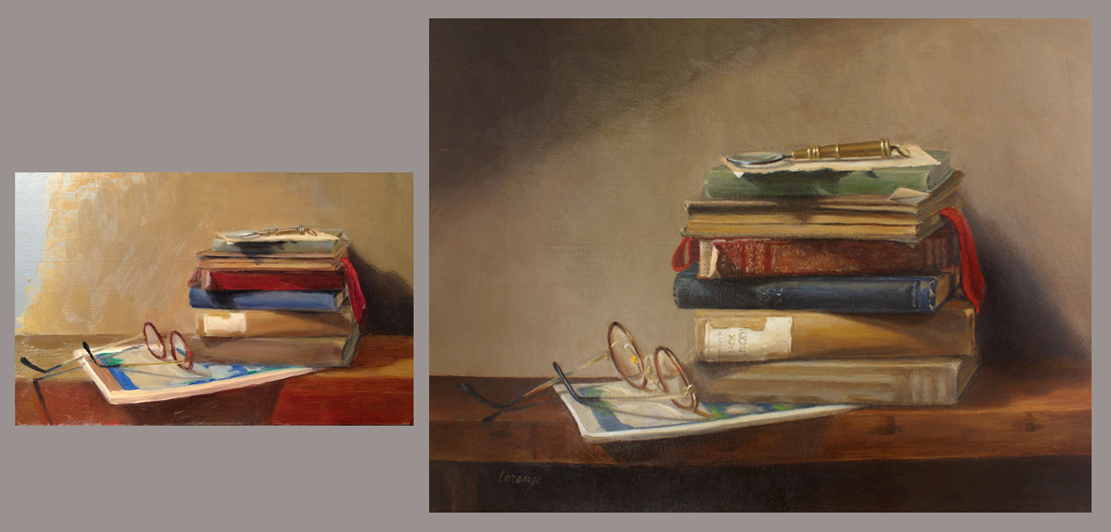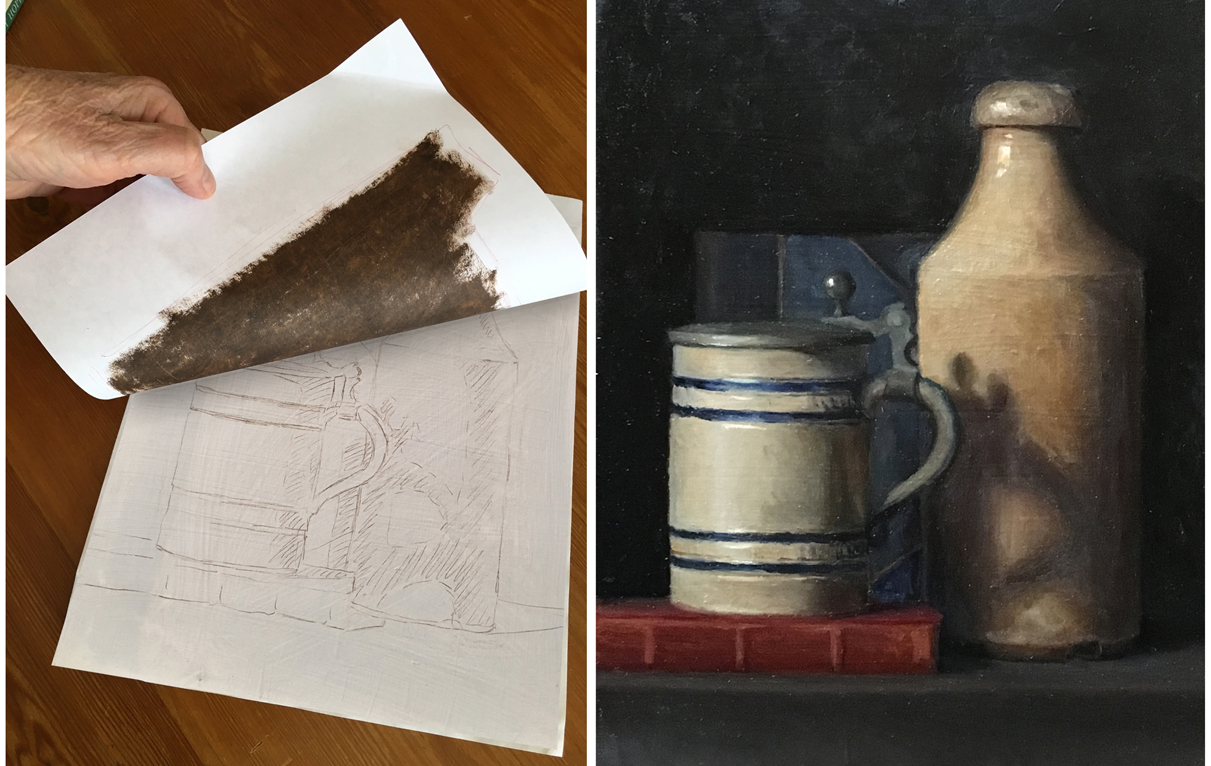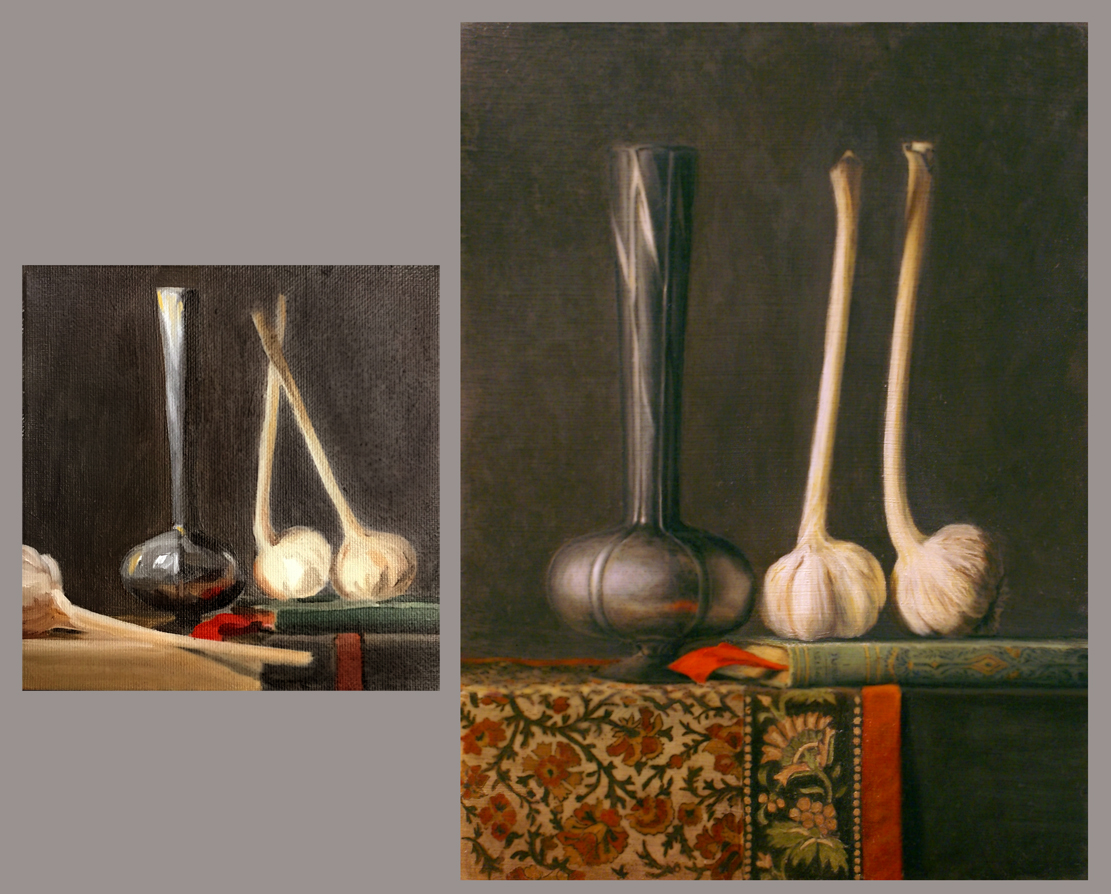“Study” might take you back to your school days preparing for a test, but in the world of painting, an oil study doesn’t necessarily require reading textbooks and flipping through flashcards. A study, typically used for still life compositions, is a small, preparatory painting that helps you get organized for the “real” painting. Think of it as practice strokes.
 The series above shows a study: a drawing, small poster study and final painting for “Betty’s Painting Book.”
The series above shows a study: a drawing, small poster study and final painting for “Betty’s Painting Book.”
There is a lot to be gained from a poster study:
- Working out the composition
- Examining value relationships
- Assessing color placement
- Gaining familiarity with the subject
- Just plain ol’ practice!
This classic technique involves making a detailed drawing of the subject, followed by a small color study, or poster. In classical painting, the term “poster” describes a small painting with simplified areas of flat color — much like early printed posters, which had few gradations or halftones.
For example, in the poster below (on the left), the shadow areas are indicated but not well defined compared with the final painting (on the right).

An oil study starts with a drawing of the subject.
After creating your drawing, you’ll need to transfer the drawing to your painting surface. Here’s how.
Step 1:
Make a reduced copy of your drawing to fit a small canvas — about 5″ x 7″.
Step 2:
Hold the copy up to the light (with drawing facing away from you) and outline the area to be transferred so you don’t have to apply paint to the whole page.
Paint an even layer of raw umber (with nothing added) on the back of the copy.
Step 3:
Carefully position the drawing on your canvas with the paint side down; secure the top with tape. Your original drawing will be facing up. Trace the drawing with a red ballpoint pen (red helps to see what you’ve traced). The paint on the back will act as “carbon paper,” transferring the image.
Be careful not to rest your hand on the paper, as it will smudge. Instead, use a mahl stick for support. Let the transferred drawing dry overnight before beginning to paint your study.


In the center photo there is a large paintbrush used as a mahl stick, which keeps your hand off the drawing to avoid smudging.

To see this transfer technique in real time, watch Tony Curanaj’s Craftsy class Oil Painter’s Handbook.
Now you’re ready to paint the poster study.
Using the transferred drawing as a guideline, start painting.
While painting your oil study, take notice of:
- Patterns of color and values
- How shapes and color bring the viewer’s eye through the painting
- Relationships of objects
- Negative space and spatial perspective.
These elements can be easily observed and assessed in the small study before diving into a larger painting. Paying attention at this point can help you make decisions about your final painting.
For example, in the poster study below (on the left), the composition in the study did not have the impact I wanted. While initially I wasn’t interested in the fabric detail, after doing the poster study, my focus shifted to the elegance of the three vertical forms, and the fabric pattern enhanced that elegance.

After creating the drawing for the painting below, it was clear that rendering the subtle differences of many rounded forms could be a challenge. To work out those challenges, I decided to do a detailed oil study of just a part of the composition. With so many bells and cast shadows, this detail study was very helpful.

Like many things we value, this technique takes patience and perseverance. It’s a long process, but the effort is well worthwhile. Spending time with the still life set up — drawing, tracing, painting, tracing again and painting again — brings a greater level of familiarity to the work. Subtle differences in color and value become easier to find. It’s true: the more you look, the more you see, the better the painting.

Share tips, start a discussion or ask one of our experts or other students a question.
No Responses to “How & Why to Do an Oil Painting Poster Study”